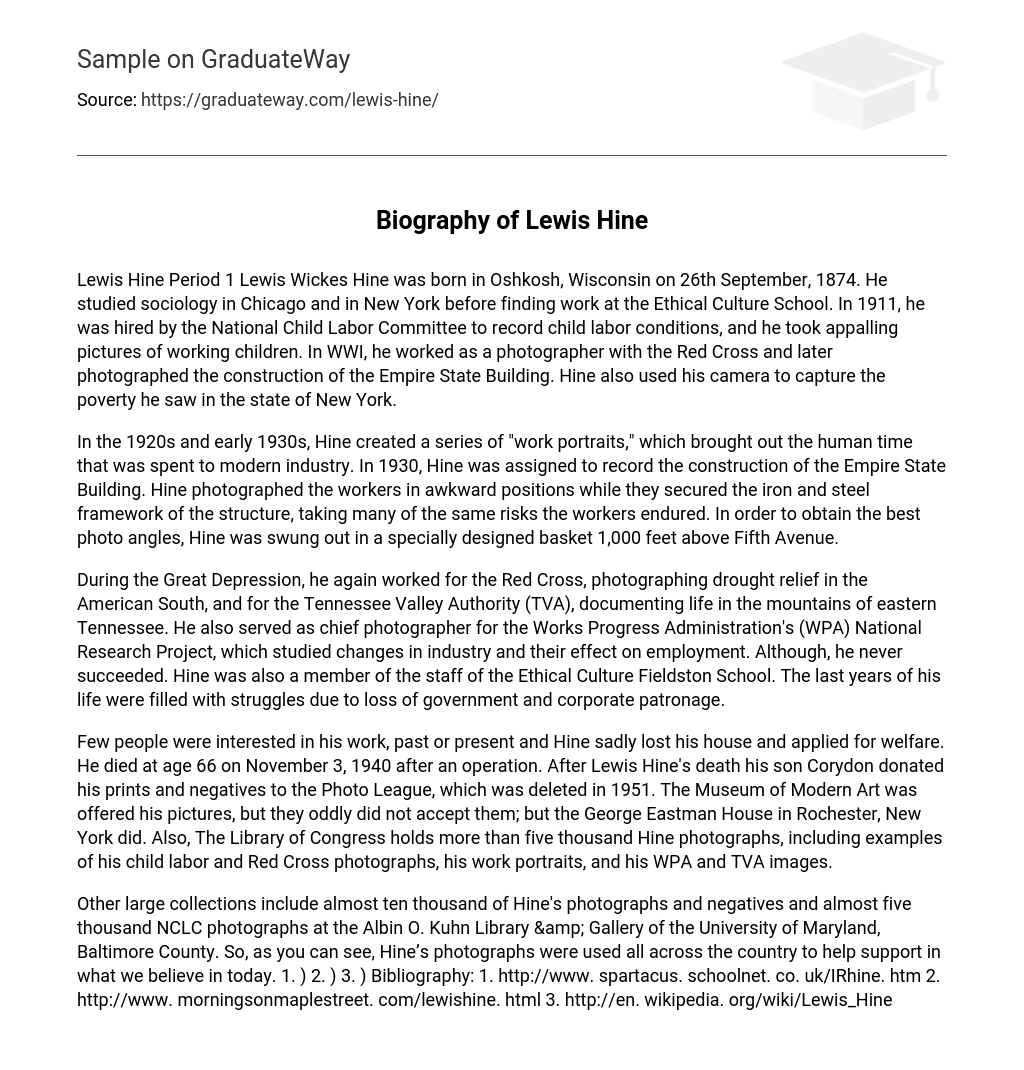Lewis Hine Period 1 Lewis Wickes Hine was born in Oshkosh, Wisconsin on 26th September, 1874. He studied sociology in Chicago and in New York before finding work at the Ethical Culture School. In 1911, he was hired by the National Child Labor Committee to record child labor conditions, and he took appalling pictures of working children. In WWI, he worked as a photographer with the Red Cross and later photographed the construction of the Empire State Building. Hine also used his camera to capture the poverty he saw in the state of New York.
In the 1920s and early 1930s, Hine created a series of “work portraits,” which brought out the human time that was spent to modern industry. In 1930, Hine was assigned to record the construction of the Empire State Building. Hine photographed the workers in awkward positions while they secured the iron and steel framework of the structure, taking many of the same risks the workers endured. In order to obtain the best photo angles, Hine was swung out in a specially designed basket 1,000 feet above Fifth Avenue.
During the Great Depression, he again worked for the Red Cross, photographing drought relief in the American South, and for the Tennessee Valley Authority (TVA), documenting life in the mountains of eastern Tennessee. He also served as chief photographer for the Works Progress Administration’s (WPA) National Research Project, which studied changes in industry and their effect on employment. Although, he never succeeded. Hine was also a member of the staff of the Ethical Culture Fieldston School. The last years of his life were filled with struggles due to loss of government and corporate patronage.
Few people were interested in his work, past or present and Hine sadly lost his house and applied for welfare. He died at age 66 on November 3, 1940 after an operation. After Lewis Hine’s death his son Corydon donated his prints and negatives to the Photo League, which was deleted in 1951. The Museum of Modern Art was offered his pictures, but they oddly did not accept them; but the George Eastman House in Rochester, New York did. Also, The Library of Congress holds more than five thousand Hine photographs, including examples of his child labor and Red Cross photographs, his work portraits, and his WPA and TVA images.
Other large collections include almost ten thousand of Hine’s photographs and negatives and almost five thousand NCLC photographs at the Albin O. Kuhn Library & Gallery of the University of Maryland, Baltimore County. So, as you can see, Hine’s photographs were used all across the country to help support in what we believe in today. 1. ) 2. ) 3. ) Bibliography: 1. http://www. spartacus. schoolnet. co. uk/IRhine. htm 2. http://www. morningsonmaplestreet. com/lewishine. html 3. http://en. wikipedia. org/wiki/Lewis_Hine





